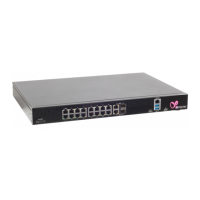Advanced Threat Prevention Engine Settings
Quantum Spark 1500, 1600 and 1800 Appliance Series R80.20.40 Locally Managed Administration Guide | 212
To enable the Remote Private Cloud Threat Emulation emulator:
1. Go to Device > Advanced Settings.
2. Search for Threat Prevention Threat Emulation policy - Emulation location.
3. Select Emulation is done on remote (private) SandBlast.
4. Add or update the emulator IP address.
5. Click Apply.
To disable the Remote Private Cloud Threat Emulation emulator:
1. Go to Device > Advanced Settings.
2. Search for Threat Prevention Threat Emulation policy - Emulation location.
3. Select Emulation is done on Public ThreatCloud.
4. Click Apply.
To configure multiple remote emulators, you must use CLI commands.
For more information on Threat Emulation, see the
Threat Emulation video
on the
Small Business Security
video channel
.
To enable Detect-only mode:
Select the checkbox.
User Messages
You can customize messages for protection types set with the Ask action. When traffic is matched for a
protection type that is set to Ask, the user's internet browser shows the message in a new window.
These are the Ask options and their related notifications:
Option Anti-Virus Notification Anti-Bot Notification
Ask Shows a message to users and asks
them if they want to continue to
access a site or download a file that
was classified as malicious.
Shows a message to users and notifies
them that their computer is trying to
access a malicious server.
Block Shows a message to users and
blocks the site.
Anti-Bot blocks background processes.
If a specified operation from a browser to
a malicious server is blocked, a
message is shown to the user.
To customize messages:
1. Click Customize Anti-Virus user message or Customize Anti-Bot user message.
2. Configure the options in each of these tabs:

